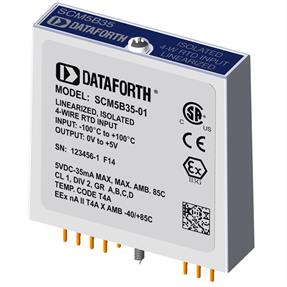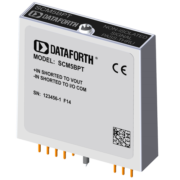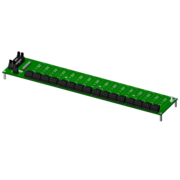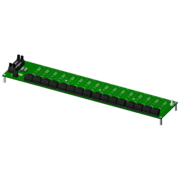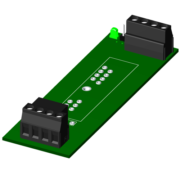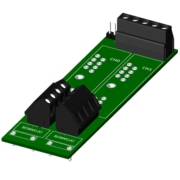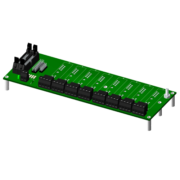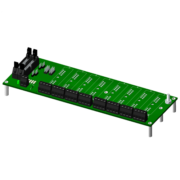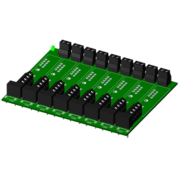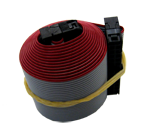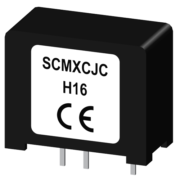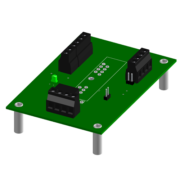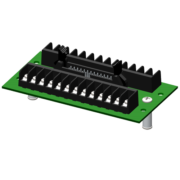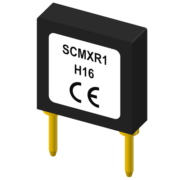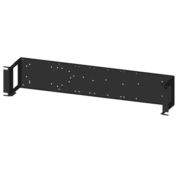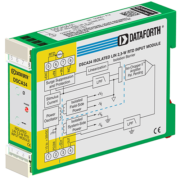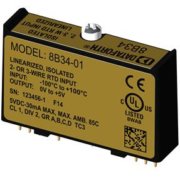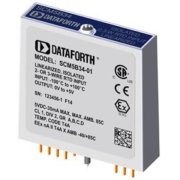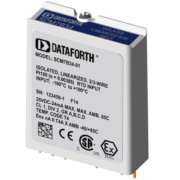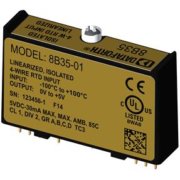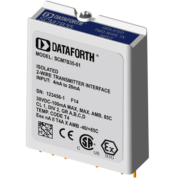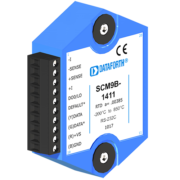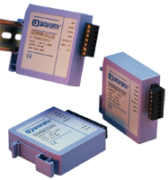The SCM5B35 Linearised 4-Wire RTD signal conditioning modules take a single channel of RTD input and filter, isolate, amplify, and convert to a high-level analogue voltage output. RTDs which can be interfaced include 100Ω Pt, 10Ω Cu or 120Ω Ni whilst analogue voltage output ranges are 0-5V and 0-10V. This voltage output is logic-switch controlled, allowing these signal conditioning modules to share a common analogue bus without the requirement of external multiplexers.
In RTD temperature measurement applications requiring a very high level of accuracy, the SCM5B35 linearised 4-Wire RTD signal conditioning module offers a significant advantage over 3-wire measurement techniques. Only the voltage dropped across the RTD and almost completely ignores the resistance or length of the RTD lead wires. RTD excitation is provided from the SCM5B35 RTD signal conditioning module by a precision current source. The excitation current is available on two leads which are separate from the two input signal measuring leads. The excitation current does not flow in the input signal leads, which allows RTD measurement to be totally independent of lead resistance. The excitation current is very small (0.25mA for 100Ω Pt and 120Ω Ni and 1.0 mA for 10Ω Cu) which minimizes self-heating of the RTD.
The SCM5B35 RTD input signal conditioning module guarantees the highest level of accuracy and noise immunity in your measured signals. These modules are designed with a completely isolated computer side circuit which can be floated to ±50V from Power Common, pin 16. This complete isolation means that no connection is required between I/O Common and Power Common for proper operation of the output switch. If desired, the output switch can be turned on continuously by simply connecting pin 22, the Read-Enable pin, to I/O Common, pin 19. Isolation is provided by transformer coupling, again using a proprietary technique to suppress transmission of common mode spikes or surges. A special input circuit provides protection against accidental connection of power-line voltages up to 240V AC. Signal filtering is accomplished with a six-pole filter which provides 95dB of normal-mode rejection at 60Hz and 90dB at 50Hz. Two poles of this filter are on the field side of the isolation barrier, and the other four are on the computer side. After the initial field-side filtering, the voltage input signal is chopped by a proprietary chopper circuit.
Circuit boards are potted within a rugged, compact and industry standard 5B package measuring just 58mm (H) x 57mm (W) x 15mm (D), making it ideal for applications where space needs to be considered. Identical gold-plated pin-outs are used to ensure a reliable connection. With a wide operating temperature of -40°c to +85°c and are also suitable for use in locations where there is presence of a flammable element such as vapours, gases or dust with being ATEX compliant. Other certifications include CE and CSA. The SCM5B31 voltage input signal conditioning module goes through a 48-hour burn-in operation and is tested twice whereby test results are uploaded to the website and can be found via searching the unique serial number.
The SCM5B31 voltage input signal conditioning module can be mounted on single-channel, dual-channel, 8-channel and 16-channel back panels which are available with panel, DIN rail or 19” rack mounting options. Each SCM5B back panel incorporates screw terminals for field wiring inputs or outputs and may include on-board temperature sensors for cold-junction compensation. A regulated supply of +5V DC is required for power and each module consumes 0.15w or 30mA of power.

